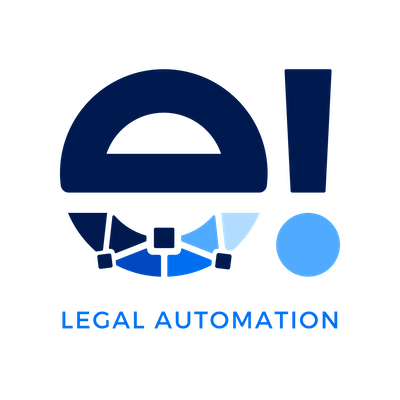Teaching No-Code Legal Automation tools to attorneys as a modern solution for navigating the ever-changing legal industry. These intuitive tools offer a way to optimize tasks and enhance overall efficiency, eliminating the necessity for coding skills.
In the past, lawyers would have to spend hours manually drafting documents, tracking deadlines, and managing their caseloads. But with no-code automation tools, lawyers can automate these tasks and free up their time to focus on more complex and strategic work.
For example, a lawyer could use a no-code automation tool to create a workflow that automatically generates documents, tracks deadlines, and sends reminders to clients. This would free up the lawyer to spend more time meeting with clients and building relationships.
No-code automation tools can also help lawyers to improve the quality of their work. By automating repetitive tasks, lawyers can reduce the risk of errors. They can also collaborate more effectively with colleagues sharing information and tracking progress.
In addition, no-code automation tools can help lawyers to be more marketable to employers. Employers are increasingly looking for lawyers who have knowledge of technology and who can use it to improve their efficiency and productivity.
Benefits of Teaching No-Code Legal Automation Tools to Law Students
There are many benefits to teaching no-code automation tools to law students. These benefits include:
- Increased productivity: No-code automation tools can help law students to automate repetitive tasks, freeing up their time to focus on more complex and strategic work.
- Improved quality of work: No-code automation tools can help law students to improve the quality of their work by making it easier to collaborate with others and by reducing the risk of errors.
- Enhanced creativity: No-code automation tools can help law students to be more creative by giving them the ability to quickly and easily prototype new ideas.
- Increased marketability: Law students who have knowledge of no-code automation tools will be more marketable to employers.
- In addition to these benefits, teaching no-code automation tools to law students can also help them to develop the following skills:
- Problem-solving skills: No-code automation tools require users to think creatively about how to automate tasks. This can help law students to develop their problem-solving skills.
- Critical thinking skills: No-code automation tools require users to think critically about the data that they are working with. This can help law students to develop their critical thinking skills.
- Communication skills: No-code automation tools require users to communicate effectively with others. This can help law students to develop their communication skills.

How No-Code Legal Automation Tools Work
No-code automation tools work by using a graphical user interface (GUI) that allows users to drag and drop elements to create their applications. This means that users do not need to know how to code in order to use these tools.
The process of creating an application with a no-code automation tool typically involves the following steps:
- Choosing a tool: There are many no-code automation tools available, so it is important to choose the tool that best meets your needs. Some factors to consider include the features that the tool offers, the price of the tool, and the level of support that the tool provides.
- Designing the application: Once you have chosen a tool, you need to design your application. This involves determining the purpose of the application, the features that the application will have, and the data that the application will use.
- Building the application: Once you have designed your application, you can start building it. This involves using the GUI of the no-code automation tool to drag and drop elements to create the application.
- Testing the application: Once you have built your application, you need to test it to make sure that it works properly. This involves running the application and checking to see that it meets your expectations.
- Deploying the application: Once you have tested your application, you can deploy it. This involves making the application available to users.
Legal Implications of Using No-Code Legal Automation Tools
Law students should be aware of the legal implications of using no-code automation tools. These tools can collect and process personal data, so law students should be familiar with the data privacy laws that apply to these tools.
For example, in the European Union, the General Data Protection Regulation (GDPR) sets out strict rules about how personal data can be collected and processed. Law students who use no-code automation tools to collect or process personal data in the EU must comply with the GDPR.
Law students should also be aware of the ethical considerations that arise when using no-code automation tools.
Conclusion
In conclusion, teaching no-code automation tools to law students is a valuable investment. These tools can help law students to be more productive, improve the quality of their work, and be more marketable to employers. Law schools should be teaching no-code automation tools as part of their curriculum to help law students prepare for the future of the legal profession.
In addition to the benefits mentioned above, no-code automation tools can also help law students to:
- Learn more about the legal technology landscape: By learning how to use no-code automation tools, law students will gain a better understanding of the legal technology landscape. This will help them to stay up-to-date on the latest trends and to make informed decisions about the technology that they use in their practice.
- Be more innovative: No-code automation tools can help law students to be more innovative. By automating tasks, law students will have more time to focus on creative and strategic work. This can lead to new ways of solving legal problems and new ways of providing legal services.
- Be more adaptable: The legal profession is constantly changing, and law students need to be adaptable to these changes. No-code automation tools can help law students to be more adaptable by giving them the skills they need to learn new technologies quickly.
Overall, teaching no-code automation tools to law students is a valuable investment that can help them to be more successful in their careers.






